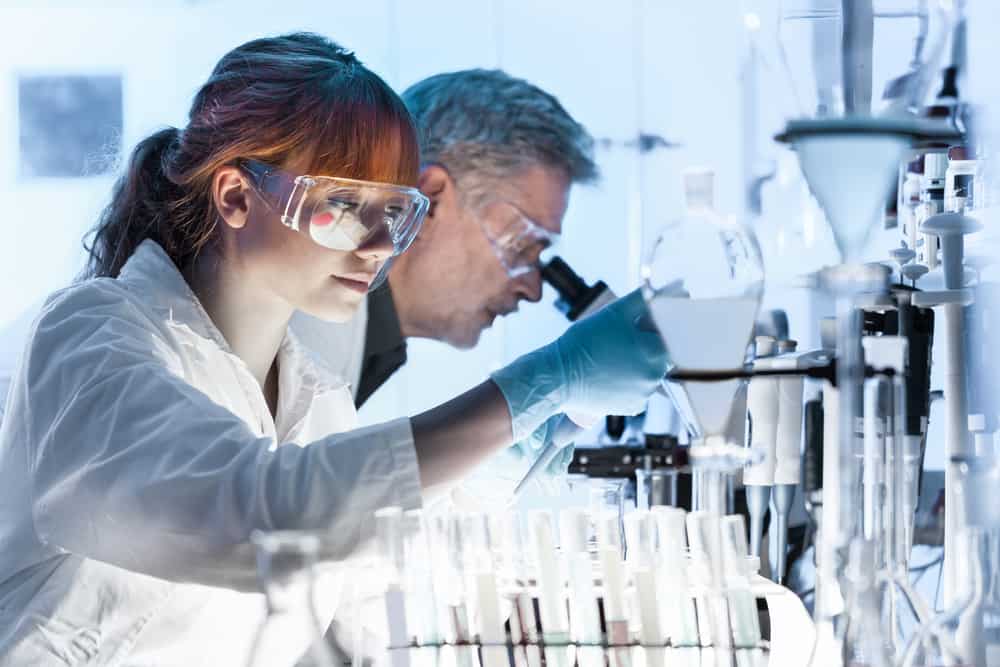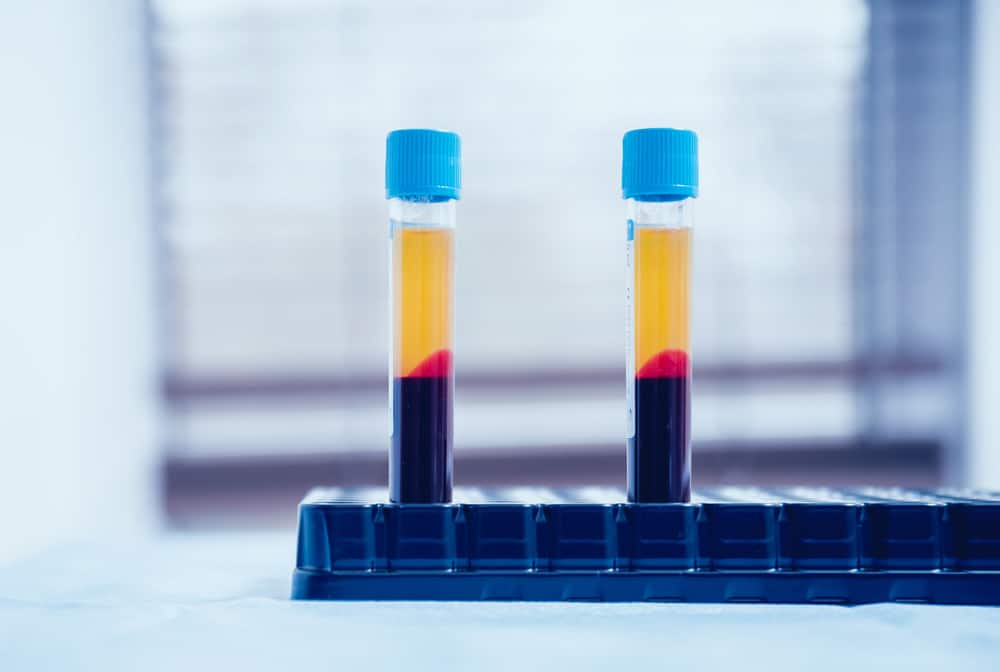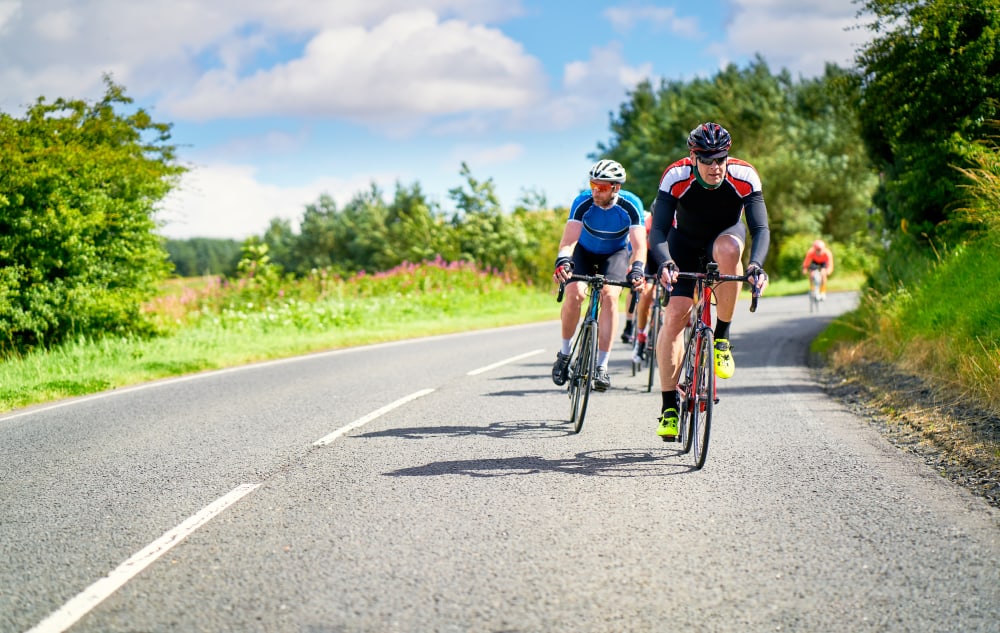
Oct 8, 2020
Over the past several weeks, patients have presented with interest in biologic treatment of arthritis other than “can you regrow my cartilage?” While cartilage regeneration was initially marketed by stem cell purveyors, it never made physiologic sense unless the patient was under 30, perhaps even younger; as cartilage does not reproduce shortly after the body achieves skeletal maturity. What had been marketed up until five years ago was the hope that stem cells could regrow cartilage at any age; well it hasn’t worked out that way. What we have learned is that the growth factors produce by platelets, the liver, and you bone marrow are effective anti-inflammatories and will provide pain relief and even reverse scarring inside and around the joint.
Growing Number of Stem Cells
Please keep in mind though that here-to-for, the number of stem cells available by aspiration and concentration of bone marrow numbered in the tens of thousands. The ability now to recover stem cells from adipose tissue with FDA approval as pioneered by Personalized Stem Cells, Inc., changes those numbers to millions and may advance our ability to regenerate cartilage. Readers of this Blog are aware that we recently completed the First FDA approved Clinical Trial using adipose derived stem cells for the arthritic knee; and we are in the process of analyzing our data.
Unorthodox Requests for Biologic Treatment of Arthritis
Refocusing on the notion of unorthodox requests, one patient recently indicated that he wanted to postpone a knee replacement by several years until he retired. Next came the request for biologic treatment of arthritis for her arthritic joins because of co-morbidities, that is other afflictions, making it unsafe to undergo a joint replacement. Yet another request came from a patient with an arthritic hip whose sister had experienced a very unsatisfactory and complicated outcome following a joint replacement. Last of all on a personal note, I have two arthritic hips and two arthritic knees; that would require four major surgical interventions fraught with potential risk and even death. Not a risk I want to undergo as long as the biologics continue to allow me to cycle long distances- “At your next opportunity you can tell them how you biked up the G Hill with a stiff wind on your nose. And your knees are still working” -(From a cycling partner last Monday am); wade through a spring creek climbing up and down with a fly rod in pursuit of trout; exercise five days a week for over 30 minutes per session on a concept 2 rowing ergometer; and look forward to the upcoming ski season.
To learn more and schedule a consultation call (312) 475-1893. You may visit my web site and watch the webinar www.sheinkopmd.com. The Personalized Stem Cell website www.PSC.com will update you about adipose derived stem cell clinical trials approved by the FDA.
Tags: arthritis treatments, biologic treatment, biologic treatments for arthritis

Aug 7, 2020
On Wednesday, I am clinically testing Alpha 2 macroglobulin, or A2M. My first patient is the product distributor; he is my guinea pig. Supposedly the injection will stop cartilage breakdown in joints, promote tissue growth and support the overall restoration of an affected joint; however, before jumping on this latest bandwagon, I want to document safety and efficacy. We have been using autogenous (yours) Platelet-derived proteins and this will be my first usage of an autogenous protein other than platelet derived.
A2M as a Treatment for Arthritis
Scientific evidence points to A2M as playing a role in stopping osteoarthritis at the molecular level. A2M is a Broad Spectrum, Multi-Purpose Protease Inhibitor (powerful chemical in destroying proteins that cause arthritis) that captures and inactivates the three major chemicals that lead to joint breakdown and cartilage damage. Once these bad chemicals are trapped by A2M, the body can then quickly eliminate them. A significant research study out of Brown University, in collaboration with the National Institutes of Health, demonstrated that although the concentration of A2M in the joint is insufficient for joint protection, an intervention with concentrated A2M provides cartilage protection in post-traumatic OA by stopping the progression of arthritis. The results of this study suggest that therapeutic injection of concentrated A2M may inhibit the breakdown of cartilage and shut down the destructive inflammatory proteins in the joint. Additionally, it is noted that early intervention may be critical for preventing or minimizing the development of post-traumatic Osteoarthritis (OA). An injection of A2M during the acute phase of an injury, allegedly is proving to be a powerful tool in preventing progressive arthritis in the affected joints, hence my interest. The A2M protein is made in your liver. Using special binding sites, it will bind and trap bad enzymes that are destroying your cartilage. Once each of A2M’s binding sites is occupied, the A2M and the disabled enzymes are naturally removed by your body.
Due to its large size, A2M cannot make it into the joint in high enough concentrations when required which may lead to chronic pain, and collapse of the joint. It is important to note that A2M is not a platelet product, A2M circulates in the plasma portion of your blood.
To learn more, call and schedule an appointment (312) 475-1893. My website is available where you will find my webinar at www.sheinkopmd.com
Tags: cell-based threatments, stem cell therapy, therapies for arthritis, treatments for arthritis

May 29, 2020
There are statistics and anecdotes that are used to review the outcomes of a particular cellular orthopedic treatment option and help determine what is best for a patient with arthritis. At times, it is difficult, and even impossible, to develop a sufficient number of patients with similar problems that might enable a statistical analysis. At that time, we have to base our recommendations on anecdotes; that is small numbers of patient responses. Two and a half years ago, a 67-year-old cycling enthusiast presented to our office with progressive pain and loss of motion owing to osteoarthritis of both knees. By the time he presented, the customary approaches to the arthritic knee had been exhausted including Physical Therapy, analgesics, non-steroidal anti-inflammatory medications, Hyaluronic Acid injections and arthroscopic “clean out.” Total Knee Replacements had been prescribed as the treatment option when all else had failed.
Patient Outcome Anecdotes
The patient had learned of my Cellular Orthopedic initiatives from his cycling group and sought consultation in our offices. The “team” of senior cyclists had experienced the recent loss of two team members because of their having experienced less than optimal outcomes following Total Knee Replacements. After our office assessment and review of images, I recommended a Bone Marrow Concentrate injection in both knees to help post postpone, perhaps avoid major surgery in the avid cyclist. I chose Bone Marrow Concentrate as the optimal means of delivering Adult Mesenchymal Stem Cells, Platelets, Precursor Cells and Growth Factor Proteins. The procedures were done on November 22nd of 2017. At this yearly follow up assessment, the patient reported that he has no pain, no limitation of function, requires no medications for arthritis and enjoys an unlimited weekly cycling routine approaching 300 miles per week.
A second example, or anecdote, is this senior athletic enthusiast, me. Many who know me are aware of my arthritic knees and hips for which I have had two rounds of biologic interventions in the past four years. Over the Memorial Day weekend, I cycled a combined 70 miles in Southwest Wisconsin, on hilly terrain, at times accompanied by my wife and twin grandsons; finished planting a large garden by hand; and helped clean our farmhouse, as we hosted and entertained our three grandchildren( ages 12, 10 and 10) with parents -the latter the most strenuous task of all.
While there is a medical cliché, “an anecdote does not a series make”, the vignettes above are real examples of what may be done for a symptomatic and functionally limiting arthritic joint. To learn more about orthobiologic options from proprietary Platelet Rich Plasma to stem cells and then some, call and schedule an appointment at (312) 475-1893. You may visit my website at www.sheinkopmd.com and watch my webinar.
Tags: arthritis pain, joint pain, patient outcomes, stem cell therapy, stem cell treatments

Mar 22, 2019
I will let the scientific facts speak for themselves. Keep this in mind the next time you see the advertisement from the Stem Cell hustlers of America. There is no such thing as a free lunch.
From: The American Journal of Sports Medicine
Are Amniotic Fluid Products Stem Cell Therapies? A Study of Amniotic Fluid Preparations for Mesenchymal Stem Cells with Bone Marrow Comparison
Alberto J. Panero, DO*, Alan M. Hirahara, MD, FRCSC, Wyatt J. Andersen, ATC,
First Published 7, 2019 Research Article https://doi.org/10.1177/0363546519829034
Abstract
Background:
In vivo amniotic fluid is known to contain a population of mesenchymal stem cells (MSCs) and growth factors and has been shown to assist in healing when used as an adjunct in procedures across multiple medical specialties. It is unclear whether amniotic fluid products (AFPs) contain MSCs and, if so, whether the cells remain viable after processing.
Purpose: To determine whether MSCs, growth factors, and hyaluronan are present in commercially available Amniotic Fluid Products.
Study Design:
Descriptive laboratory study.
Methods:
Seven commercial companies that provide amniotic fluid were invited to participate in the study; 3 companies (the manufacturers of PalinGen, FloGraft, and Genesis AFPs) agreed to participate and donated AFPs for analysis. The AFPs were evaluated for the presence of MSCs, various growth factors relevant to orthopaedics (platelet-derived growth factor ββ, vascular endothelial growth factor, interleukin 8, bone morphogenetic protein 2, transforming growth factor β1), and hyaluronan by enzyme-linked immunosorbent assay and culture of fibroblast colony-forming units. These products were compared with unprocessed amniotic fluid and 2 separate samples of MSCs derived from human bone marrow aspirates. All groups used the same culture medium and expansion techniques. Identical testing and analysis procedures were used for all samples.
Results:
MSCs could not be identified in the commercial AFPs or the unprocessed amniotic fluid. MSCs could be cultured from the bone marrow aspirates. Nucleated cells were found in 2 products (PalinGen and FloGraft), but most of these cells were dead. The few living cells did not exhibit established characteristics of MSCs. Growth factors and hyaluronan were present in all groups at varying levels.
Conclusion:
The Amniotic Fluid Products studied should not be considered “stem cell” therapies, and researchers should use caution when evaluating commercial claims that products contain stem cells. Given their growth factor content, however, AFPs may still represent a promising tool for orthopaedic treatment.
Clinical Relevance:
Amniotic fluid has been proposed as an allogenic means for introducing MSCs. This study was unable to confirm that commercial AFPs contain MSCs.
Tags: amniotic fluid, arthritis, Bone Marrow Concentrate, Cartilage, cellular orthopedics, growth factors/healing enhancement, joint pain, mesenchymal stem cells, MSC, Orthopedic Surgeon, Osteoarthritis, regeneration, sports medicine, stem cell therapy
Mar 14, 2019
The basic principles behind the golf swing and the swing at home plate are not that much different. While the preferences may vary, when you break down the mechanics, there is similarity. Certainly there are differences between laying down a bunt and a 230-yard drive off the first Tee. The same differences are in play when putting is contrasted to the swing driving a 385-foot home run out of the park. In the several scenarios, the swing should look like one smooth, continuous motion that culminates with you holding a nicely balanced finish as the ball sails through the air. Within that motion however, is a series of techniques that each must be executed properly in order to produce the desired outcome.
Concentrating on golf swing mechanics, there is the Takeaway, Back swing, Transition, Impact, and Follow through. Continuing to explore the swing mechanics, backward movement of the shoulders and arms is followed by backward rotation of the spine, cocking of the hips, cocking of the wrists, timing, rotation of the pelvis, forward rotation of the spine, pushing and pulling of the arms and shoulders, guiding action and follow through.
Even if the physics behind my explanation is not perfect, the point here is that any pain and altered motion caused by injury or arthritis will affect your game. If you haven’t been able to play since last fall, now is the time to head out to the gym to catch up on strength training, stretching, with emphasis on spinal and pelvic rotation. Then there are the golf simulators and indoor driving ranges in and around Chicago.
If you experience pain in your muscles and joints along with limited motion, recent legislative changes in Illinois allow you direct access to the physical therapist. If after several sessions with the physical therapist, you haven’t realized the improvement you seek, it is time for an evaluation by an orthopedic surgeon. She or he, perhaps me, will complete a medical history and physical examination and review X-ray and MRIs of the effected anatomy. The end result of that intake may be a prescription for further PT, a prescription of pharmacologic management or in my case, a Regenerative Medicine/ Stem Cell procedure; that is a needle and not a knife.
I have documented in several recent scientific publications that Regenerative Medicine using either Bone Marrow Concentrate or Micro-fragmented Adipose tissue recovered by Liposuction will allow you to play 18 holes of golf this upcoming season. At times concentrated and then processed Platelets offer an opportunity for a patient afflicted with arthritis or limited by bodily injury to return to an active lifestyle and enjoy a full schedule of outdoor recreational pursuits. Please make note that my regenerative menu of services is based on your own cells and proteins that have been proven to work and meet FDA and FTC guidelines.
The weather forecast is improving and the sun was out today; the opening of both the baseball and golf season is only a about a week or so away. I say “Play ball.”
Tags: arthritis, Autologous Protein Concentrate, baseball, BMC, Bone Marrow Concentrate, cells, golf, injection, joint health, joint pain, lipogems, liposuction, micro-fragmented adipose, muscle injury, Orthopedic Surgeon, Osteoarthritis, pain, Physical Therapy, platelets, protein, PRP, regenerative medicine, sports medicine, stem cells, training
Feb 28, 2019
My column regarding ACL ruptures appeared last Friday. That afternoon, I received the following inquiry and comment from a reader, regarding the prognosis and possible early preventive interventions for a significant knee injury.
“I am one of relatively few patients who has had the Bone Marrow Concentrate treatment for a fully-torn (not-retracted) ACL tear and to date, I’ve had what I’d consider to be an amazing recovery. I read your latest blog post and just thought I’d let you know that I’m back to very aggressive skiing (including small but non-trivial jumps). However, I did want to ask, if you would be willing to comment, if there are actions or periodic diagnostics, you’d recommend to maximize the chances that I’m still happy skiing 10,20,30 years after the injury? I understand you probably can’t comment but nevertheless wanted to let you know I was also a real-life person who had a significant knee trauma with multiple surgical consults all agreeing it was fully torn and required surgery (to return to high-level skiing) and now have a fairly normal looking ACL in MRI (per independent radiologist) and am back to 100% with activities that require a lot of knee stability. I did do two rounds of same-day BMA reinjections and a bunch of platelet injections but no surgery.”
The answer is an orthopedic assessment at three-year intervals to look for markers of post traumatic osteoarthritis such as loss of terminal extension and asymmetrical flexion. The MRI is helpful in detecting moderate arthritic changes but the latest development, the needle scope, allows an orthopedic surgeon to directly examine the meniscus and cartilage in an office setting. The concern is post traumatic arthritis, cartilage defects that will progress, and meniscal damage not always seen on the MRI. Here are some thoughts on early intervention with Cellular Orthopedic and Regenerative Medicine options.
A recent Study Compared the Efficiency of Needle Arthroscopy Versus MRI for Meniscal Tears and Cartilage damage. Needle arthroscopy (NA) may be a less costly and more accurate option for diagnosis and treatment of meniscal tears and early onset post traumatic arthritis than MRI, according to a study published in the February issue of Arthroscopy. Researchers collected data on costs for care and accuracy, including procedures for both false-positive and false-negative findings well as private payer reimbursement rates. They compared outcomes using the global knee injury and osteoarthritis outcome score (KOOS). Patients were followed and evaluated over a two-year period.
There are several restorative options now available when conservative therapies for the treatment of knee degenerative processes, such as non-pharmacological interventions, systemic drug treatment, and intra-articular therapies offer only short-term benefits or fail. Before resorting to surgery; be aware that encouraging preliminary results have been reported using mesenchymal stem cells (MSCs), either alone or in association with surgery. My clinical published research documents success with using your Bone Marrow Concentrate for joint restoration and combating progression of posttraumatic arthritis. Additionally, I have published an article concerning another source for joint restoration, micro-fractured adipose tissue. The latter has created a huge interest in the context of cartilage regeneration due to its wide availability, ease to harvest and richness in mesenchymal cell elements within the so called stromal vascular fraction. Moreover, MSCs from adipose tissue are characterized by marked anti-inflammatory and regenerative properties, which make them an excellent tool for regenerative medicine purposes.
Tags: ACL tear, Adult Mesenchymal Stem Cells, arthritis, Arthroscopy, biologics, bone marrow, cartilage damage, cellular orthopedics, hip pain orthopedic surgeon, joint pain, joint restoration, knee pain, KOOS, meniscal tears, MSC, orthobiologic, Osteoarthritis, PRP, sports medicine, therapy, treatment



